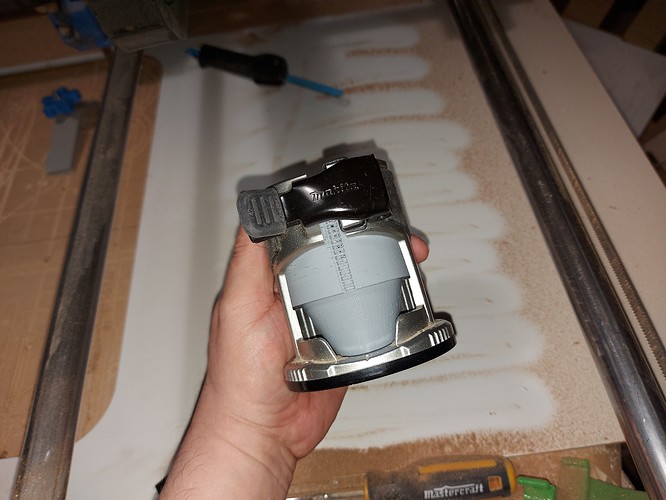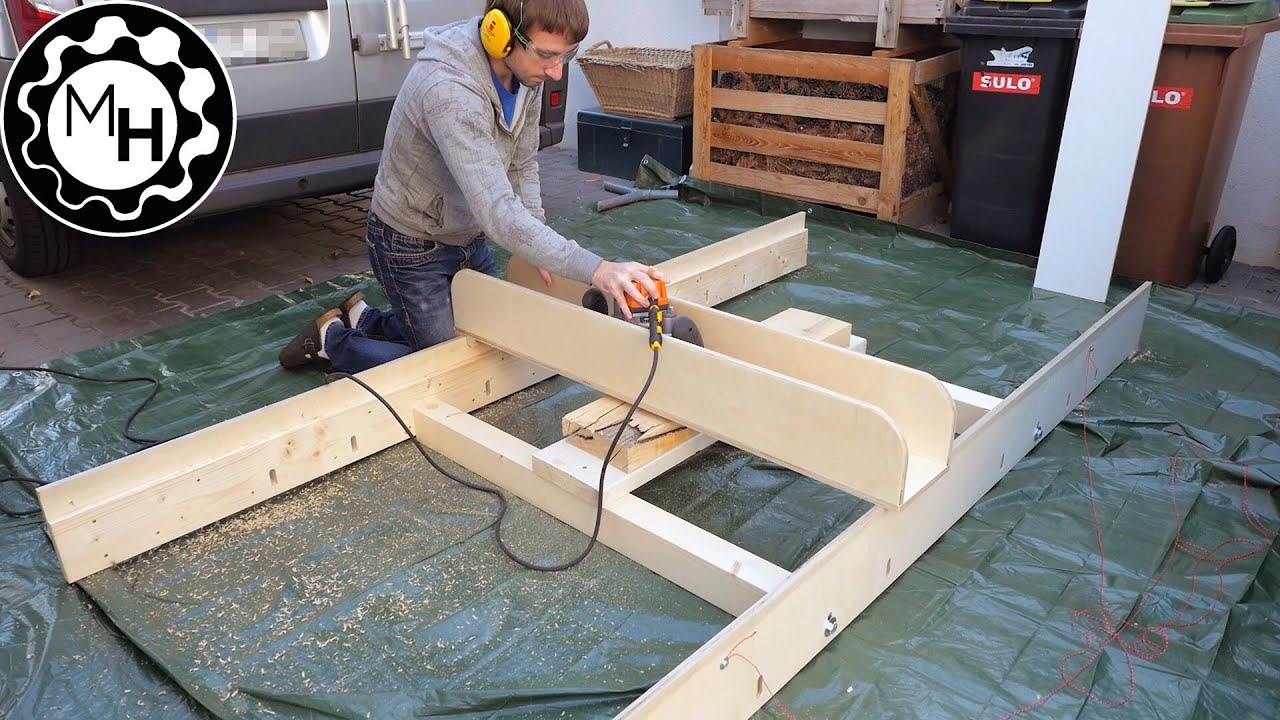I thought about this too, but first I need a better 3D printer, which is what I’m using the LR to build…
I think the answer is probably going to be the 1/4" shank bits. I’m going to miss having the resolution, but I’ve already gone to 1/4" for many of the Primo projects that I’ve done. Well, I’ll still try to get this working with the 1/8".
I was playing with some other cuts, and managed to catch a screw head on the bottom of the plate. It got by, but that’s definitely an avoidable problem. Tomorrow, I’ll get some countersink head #6-32 screws to replace those with, and I’ll take the countersink drill bit to the bottom of the plate.
That’s the Makita equivalent of what’s called the VacDuct.stl in the LR2 files. I just happened to have white in the printer when I printed it. Actually it looks like it doesn’t allow the router to go much lower with it out, because there are stops in the side of the shoe (Clamp, whatever) to prevent the collet nut from coming out the bottom, and there’s not a lot of clearance there.
Yep. I do have a tendency to want to re-invent the wheel, but I’m always happy to take a hint from those who have gone before me. Even if nothing else, I can get an idea of what pitfalls I want to avoid by looking at other solutions to a problem. My CoreXY laser had all kinds of things inspire it, not the least of which is the ZenXY. (Actually, I’ve found quite a few V1 inspired changes in my designs, like the way Ryan does the bottom of screw holes to layer the slicer’s bridging. Something that obvious once you’ve seen it is hard to ignore, but I’d have never seen it if I hadn’t paid attention to these designs.)
I think that the DeWalt router might be a little different from the Makita, but there can’t be THAT big a difference. It does seem to me that the screw heads are really in the way when I look at it now though. I am fairly convinced that going with the countersunk screws might be all the difference that I need in order to do most of what I want to do with the LowRider. For more than 1/2", I think that I’m willing to go with 1/4" bits.
Actually it’s only double. A 1/4" mill does have 4x the total area (A circle 2x the diameter has 4x the area) but except for drilling operations, it’s the width of path that matters, which is double. It might seem like more though. XD
The vac being further from the surface is another issue. Lots less suction there every mm you raise the plate. I don’t think that I want to put bristles around mine either. It’s hard enough to see under there for zeroing on the tool to the work.
![]() just a little bit of sandpaper required for edge work.
just a little bit of sandpaper required for edge work.

